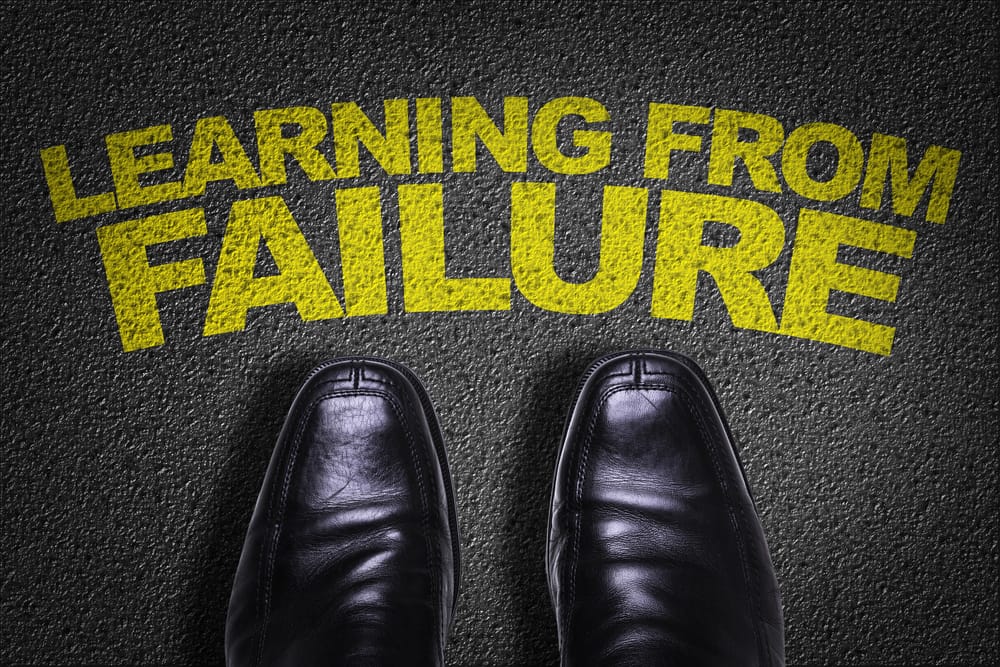From Seed to Scale: How Power Electronics Startups Can Navigate the Funding Landscape
Capital favors discipline over disruption. For Power Electronics startups—where innovation underpins the energy transition and Industry 4.0—raising capital is no longer just about breakthrough technology. It is about demonstrating operational maturity, leadership continuity, and investor alignment. From seed rounds to Series C, success depends as much on recruiting credible executives and building resilient Boards as it does on engineering excellence.
Understanding the funding journey
Power Electronics startups occupy a unique niche: their innovations fuel electric mobility, renewable integration, and advanced manufacturing. Yet unlike software ventures, these companies face long development cycles, high capex, and complex regulatory pathways. Investors know this, and so do experienced recruiters who work alongside CEOs and Chairpersons to prepare leadership teams for scrutiny.
Seed investors focus on proof of concept and founder vision. By Series A, venture funds demand evidence of scalability—supply chain readiness, IP protection, and financial discipline. Series B and beyond require more: governance, succession planning, and a leadership team capable of driving commercialization across regions. Boards that align recruiting with each capital phase outperform those that treat leadership as a secondary concern.
Chairpersons emphasize that the ability to navigate the funding continuum depends on foresight. CEOs who engage executive search partners early gain access to leadership pipelines that can evolve as investor expectations rise.
The CEO’s dual challenge: innovation and investor management
Power electronics founders often come from engineering backgrounds, driven by deep technical expertise. Yet as capital demands grow, their roles shift from innovator to institutional leader. Recruiters confirm that CEOs who make this transition successfully are those who embrace governance, transparency, and structured communication with investors.
Chairpersons affirm that private equity and venture capital firms are not only evaluating technology—they are evaluating leadership character. Executive search firms play a critical role in identifying whether a founder-CEO can scale or whether new CXO appointments are needed to balance strengths and mitigate risk. Boards that address these dynamics proactively send strong signals to investors that succession and stability are under control.
Recruiters advise that CEOs should view fundraising not as a transaction but as a test of leadership credibility. How they assemble teams, respond to due diligence, and manage feedback often determines valuation outcomes more than technical milestones alone.
Board composition as a capital multiplier
A well-structured Board is a magnet for investment. In the power electronics sector, where products intersect with energy policy, manufacturing, and supply chains, investors seek Boards with both technical and commercial oversight. Chairpersons with prior experience in scaling energy or industrial ventures often accelerate investor confidence simply by lending governance credibility.
Recruiters highlight that many startups underestimate the signaling power of their Boards. The presence of independent directors with venture, regulatory, or M&A experience communicates readiness for institutional funding. Boards that remain founder-heavy beyond the seed stage risk being viewed as insular or unscalable.
Executive search partners help identify and recruit directors who balance innovation with fiduciary rigor. They ensure that governance structures—risk, audit, and compensation committees—are established early enough to reassure investors. Boards that embrace these frameworks not only close rounds faster but also attract higher-quality funding partners who add strategic value.
Leadership recruiting for each funding phase
Recruiting priorities evolve as startups progress through the capital curve. At the seed stage, CEOs need versatile executives who can manage multiple functions—R&D, product development, and early partnerships. By Series A, the focus shifts to CXOs with operational discipline and experience in scaling production. By Series B, investors expect specialized leadership—finance, supply chain, and regulatory executives capable of executing under pressure.
Recruiters confirm that startups that anticipate these shifts through structured succession planning outperform peers. Chairpersons who integrate recruiting into long-term capital strategy reduce disruption when new capital demands arise. Executive search partners bring foresight, identifying future-ready leaders before investors even ask for them.
Succession becomes especially critical when founders must delegate execution to professional managers. Boards that manage this transition carefully—supported by retained recruiters—retain investor confidence while preserving the company’s culture of innovation.
Strategic perspective for Boards and CEOs
Power electronics startups stand at the intersection of energy innovation and capital intensity. For CEOs, Boards, and Chairpersons, navigating the funding landscape requires discipline, transparency, and leadership depth. Recruiting strategically for each phase, institutionalizing governance, and planning succession early are what distinguish those who scale from those who stall.
For insights on leadership, capital readiness, and executive search strategies for emerging technology ventures, visit NextGen’s Industry News.
Investors don’t just fund ideas—they fund leadership prepared to turn those ideas into lasting enterprises. From seed to scale, success in power electronics begins with recruiting the right team and building the right Board.
Case examples: when leadership drives investment outcomes
Recent years have shown a clear pattern: investors follow leadership, not just innovation. In one European power electronics startup developing next-generation converters for grid applications, early funding stagnated despite strong technical validation. The turning point came when the Board appointed a CEO with prior Series B experience in semiconductors and an independent Chairperson from an energy venture capital fund. Within six months, the company closed an oversubscribed $40 million Series B.
Recruiters highlight that this outcome was not coincidental—it was engineered. By introducing leadership with fundraising experience and governance credibility, the startup transformed investor perception from high-risk to high-potential. Chairpersons and CEOs who anticipate this shift before investors demand it consistently achieve faster valuations and shorter diligence cycles.
Another case in Asia’s Industry 4.0 ecosystem mirrored this trajectory. A startup in high-efficiency power modules replaced its founding CTO with a commercially seasoned CEO identified through an executive search process. The result: a successful Series A backed by strategic investors from automotive and robotics sectors. Boards that act early to professionalize leadership not only attract capital—they retain it.
Recruiters as catalysts for investor confidence
Recruiters have evolved into strategic intermediaries between startups and capital markets. Executive search firms specializing in deep-tech sectors now help Boards align leadership architecture with investor expectations. Chairpersons note that having a recruiter embedded in the pre-funding phase can accelerate readiness by months.
Recruiters begin by mapping leadership gaps—skills, governance, or communication—and benchmarking the team against peer-funded companies. This intelligence allows CEOs and Boards to proactively adjust their hiring and succession plans, ensuring that leadership meets the standards institutional investors expect.
Executive search partners also assist CEOs in developing investor-facing narratives. They help translate leadership credentials into funding leverage—highlighting succession stability, market experience, and governance maturity as competitive differentiators. Recruiters act as strategic advisors, guiding CEOs on how to demonstrate that leadership risk is not an obstacle but a strength.
Chairpersons stress that this preparation is vital during Series A and Series B, when due diligence often includes leadership assessments. Recruiters familiar with investor processes can help Boards preempt questions and position executives as assets rather than uncertainties.
Governance maturity as a funding filter
By Series B, governance maturity becomes a precondition for serious investors. Boards that still operate informally or lack defined committees signal operational risk. Recruiters confirm that institutional investors increasingly assess whether a company’s Board composition and succession frameworks align with expected fiduciary standards.
Chairpersons recognize that governance now functions as a screening mechanism. Funds managing large infrastructure and sustainability portfolios prefer startups that already reflect corporate discipline. Boards that demonstrate transparency, structured reporting, and defined risk management stand out immediately.
Recruiters support this transition by sourcing directors and CXOs with governance experience from mature companies. They help Boards establish early committees for audit, compensation, and risk—mirroring the structure investors are accustomed to. The presence of these systems tells investors the organization is prepared for scale.
In power electronics, this is particularly crucial, as scaling requires long-term capital commitments. Institutional investors—especially those in energy and infrastructure—demand evidence that leadership and governance can withstand technical delays or market fluctuations. Boards that integrate recruiting and governance strategy early mitigate these concerns.
The CEO–Chairperson dynamic during fundraising
CEOs lead the story; Chairpersons validate it. Successful fundraising depends on the synergy between the two. Recruiters emphasize that Chairpersons with strong investor networks often play a decisive role in closing capital rounds, but only when their collaboration with the CEO is built on trust and transparency.
Boards that underestimate this dynamic often falter during Series B, when investor scrutiny intensifies. Recruiters help balance the relationship by clarifying responsibilities: CEOs drive execution, Chairpersons ensure credibility. Executive search firms also identify Chairpersons whose expertise complements the CEO’s strengths—technical founders paired with financially experienced Chairs, or vice versa.
This alignment reassures investors that governance can handle growth pressure. Private equity and venture capital firms consistently favor startups where the CEO–Chairperson relationship is clearly defined and supported by structured communication channels.
Recruiting for scale: transitioning from founders to builders
At the scaling stage, Boards often face the sensitive challenge of transitioning founders into new roles. Recruiters confirm that founders who step aside strategically—often retaining Board or advisory positions—enable smoother fundraising and stronger investor relations.
Chairpersons recognize that this shift must be managed carefully to preserve culture while enabling professionalization. Executive search firms help facilitate this transition through leadership assessments, communication alignment, and succession mapping. The goal is not replacement, but evolution—ensuring that leadership remains capable of meeting investor expectations without losing its entrepreneurial edge.
Recruiters who have managed similar transitions in HealthTech, Medical Devices, and Semiconductors note that transparent communication between the founder-CEO, the Board, and investors is key. Succession must be presented as a strategic move toward growth, not as a corrective action.
Strategic perspective for Boards and CEOs
From Series A to Series B and beyond, the leadership narrative determines funding velocity. Boards that embed recruiters into their strategic planning, institutionalize governance, and manage CEO–Chairperson alignment gain a structural advantage. For CEOs, recognizing that leadership perception is as valuable as technological innovation is what separates those who raise capital from those who chase it.
For further insights into executive recruiting, governance, and investor alignment in advanced technology sectors, visit NextGen’s Industry News.
Investors back discipline disguised as innovation. Boards and CEOs who understand this truth—and recruit accordingly—will find that capital always follows leadership prepared to scale.
About NextGen Global Executive Search
NextGen Global Executive Search is a retained firm focused on elite executive placements for VC-backed, PE-owned, growth-stage companies and SMEs in complex sectors such as MedTech, IoT, Power Electronics, Robotics, Defense and Photonics. With deep industry relationships, succession planning expertise and a performance-first approach to recruiting, NextGen not only offers an industry-leading replacement guarantee, they also help CEOs and Boards future-proof their leadership teams for long-term success. They also specialize in confidentially representing executives in their next challenge.





















